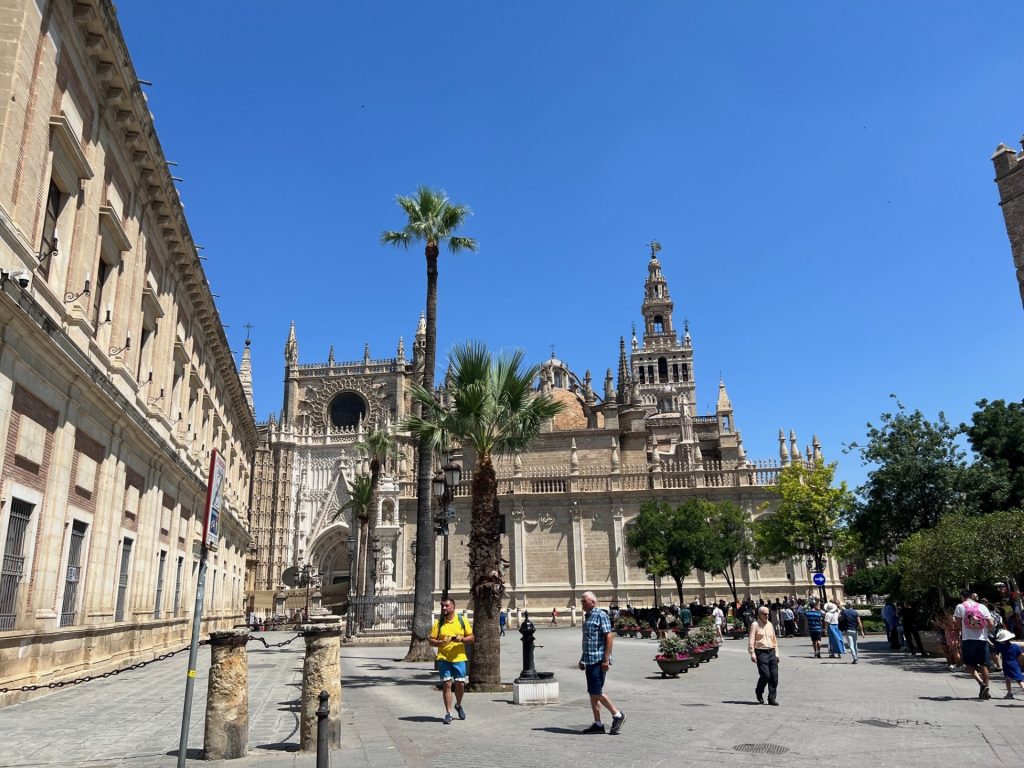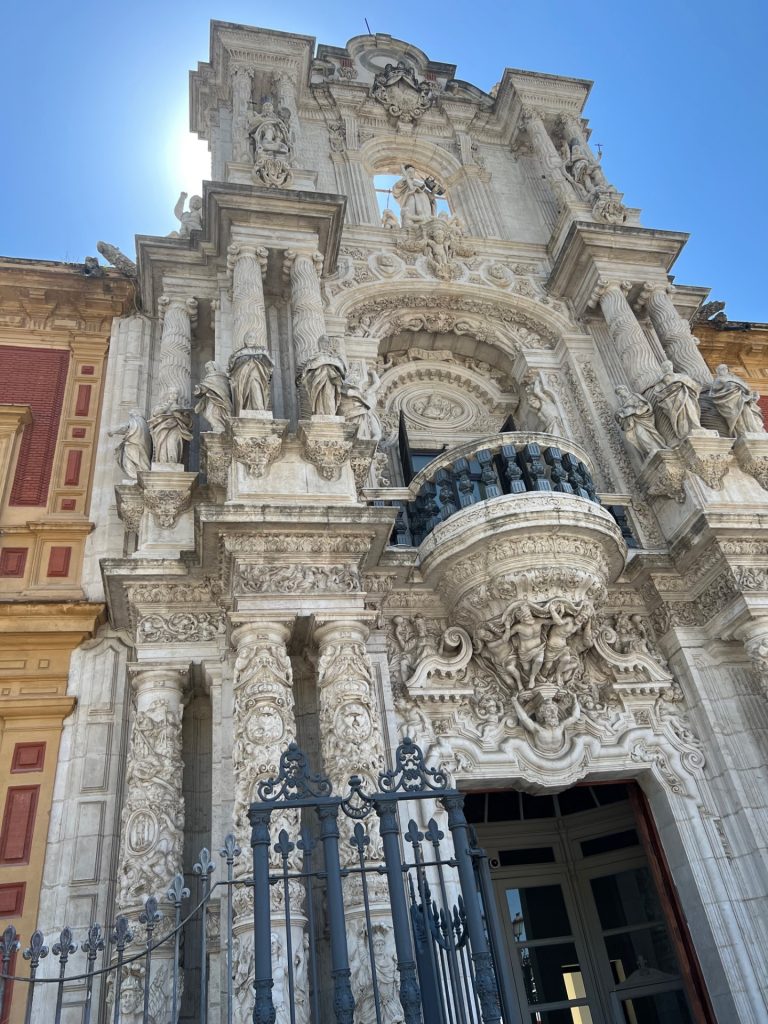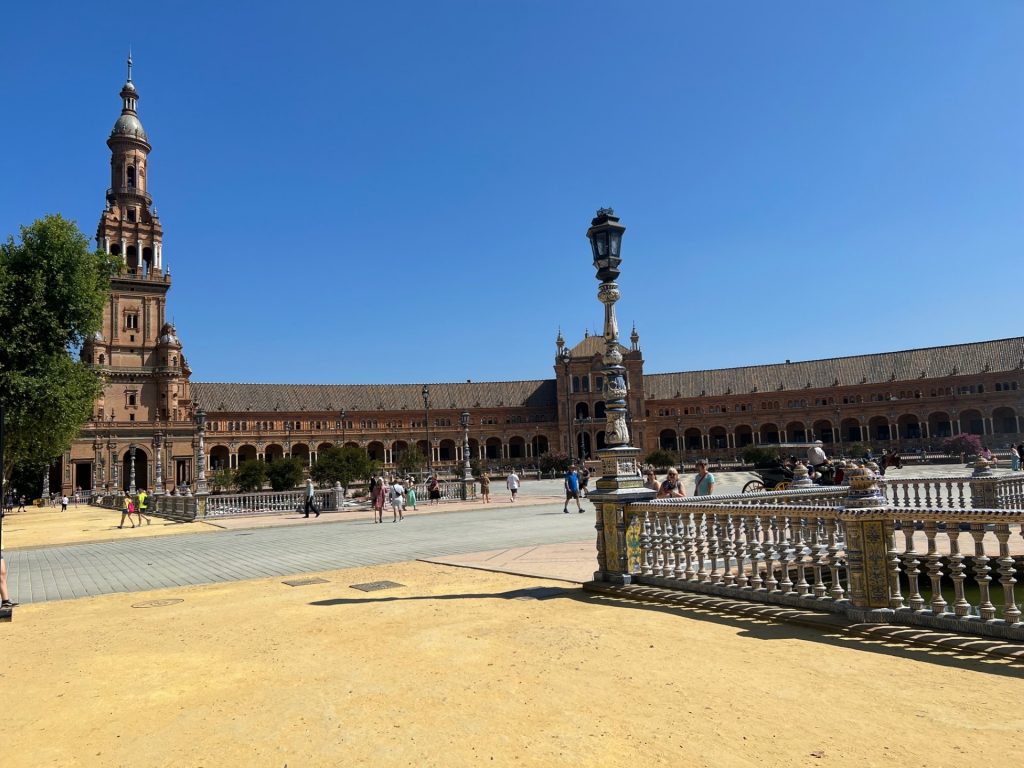
To appreciate and understand this magnificent city, the fourth largest in Spain, one must walk it. And that’s what I did, lots of walking. Every step was one of discovery. Seville was once considered among the wealthiest cities of Europe, a city of trade, manufacturing, textiles, ceramics, and shipping. Building after building showcases the city’s rich culture, past and present, with monuments to the significance of Seville and its treasures. I marveled at the architecture; a blend of Moorish, Christian, and Gothic, incorporating an art form called mudejar, which uses brick, ceramics, stucco, and tile.
Need help planning your trip? Click here to find a MAST Travel Advisor near you. MAST Travel advisors are here to help with all your travel plans and needs.
The Cathedral of Seville


In fact, the cathedral of Seville, the third largest in Europe, is also Europe’s largest Gothic cathedral, and began as a mosque built during the period the Arabs ruled much of the Iberian-peninsula. This was a surprise to me considering Europe’s well-known, grand cathedrals such as Notre Dame, Cologne, and others.
There are so many amazing buildings in Seville including Plaza de Espana, an enormous monument to the 17 autonomous regions of Spain. Buildings constructed for the Ibero-American Exposition of 1929 are now museums and consulates, adding to the rich architecture of the city and among the amazing monuments.
But it is the labyrinth of narrow streets, barely wide enough for cars, that show the soul of Seville. Shop after shop ,from internationally known brands to tiny “mom and pop” shops only a few hundred square feet in size, compete side-by-side. And then there are hundreds of small restaurants, taverns, bodegas, street-side tables, and outdoor cafes along the maze of streets. I would call Seville a city of entrepreneurs, with thousands of small business owners.
Food & Culture In Seville


I love exploring and eating the local food and drink. For two days in-a-row, I stopped for lunch and took a break from walking at one of the tiny street-side restaurants. The first day was tapa-sized anchovies on tomato toast. The next day, smoked tuna and with asparagus, which is hard to find in the U.S., washed down each day with the local beer. What is great about Spain is that many menu items come as either full plates or tapas. Tapas is a great option not only for sampling food and smaller portion sizes, but an inexpensive meal. I only spent 10 to 15 euros on food, beer, tax, and a small tip. Tipping in Spain is optional. Tourists tend to leave 1 or 2 euros.
The cultural heritage of Seville includes flamenco, Spanish guitars, equestrian shows, operas such as Carmen, the Marriage of Figaro, and the Barber of Seville, to name a few. A wonderful refuge in the city center is Parque Maria Luisa, with its lush foliage, impeccable landscape, and tall trees providing lots of shade, is a great place to picnic or ride the bike paths. Another popular pastime in Seville is kayaking or rowing in the Guadalquivir canal. And of course, there is always wine and sherry tasting.
The City Of Seville – A Must Visit

With a climate similar to inland Southern California, such as parts of Orange County and San Diego County, featuring mild winters, hot summers, no insects, and gentle breezes, Seville is a lovely place to spend a few days or perhaps even a few months.
